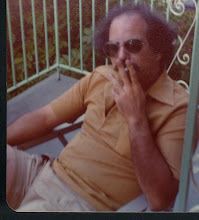[Originally posted August 14, 2005]
I did not think I would have to make another entry on the behavior of drivers. However, recent developments have made it impossible not to add some more comments.
Allstate recently declared that my hometown, Cedar Rapids, Iowa, has the safest drivers in America (http://www.allstate.com/media/newsheadlines/pr_2005/PageRender.asp?page=pr_2005_06_07_wheel.htm). As stated in the report:
'The first-of-its kind ranking of U.S. cities with populations 100,000-plus, revealed that the average driver in the central Iowa city will experience an auto collision every 15 years, compared to the national likelihood of a crash every 10 years – making them 33.28 percent less likely to have an accident than the national average.'
Although slightly incredulous, I accepted this report as published in the local paper even though my personal observations belayed the claim. Everyone I talked to over the next 2 days were equally incredulous. I was not the only one who has noticed an increase in bad driving over the past 2 years. And several newspaper letters also took exception to the claim. On the third day after the release of the report, as I was thinking that the data must be true because Allstate says it is, I got a frantic call from my wife: she has just been broadsided by a vehicle crossing an intersection after the light changed from yellow to red.
Intersection jumping is a common occurrence around here. Rarely a week goes by without a newspaper accident piece that clearly states that the cause was a vehicle that did not stop for a red light. Attempting to beat traffic light changes, running through red lights, rolling indiscriminately through a right turn on red (legal in this state), and even making left turn on red, are all not an infrequent occurrence. I usually see this behavior during prime driving times: morning rush, evening rush, and lunchtime rush, but I have also observed, far more times than I would like, vehicles that break the traffic rules because the driver concluded that the rules only apply under certain situations. For example, ever notice the driver who stops at a red light, decides that there is no other traffic, and proceeds to cross the intersection? I have observed this much too often.
Another alarming hazard that seems to be on the increase is the driver who believes that the turn lane starts several hundred feet or several blocks before the intended intersection. Never mind that the the lane is clearly marked with yellow lines, or worse, there is no road but merely a dirt shoulder. Of course this means that driver who follow the rules and waits and signals to enter the turn lane where it is marked is at risk.
I know that that many states have no-fault insurance and it is common for drivers to blame the road, the weather or the vehicle for accidents, but my observations indicate that most vehicle accidents are due to driver error. So as I thought about the Allstate report, I wondered what I saw that the insurance company did not. I came to these conclusions:
1. Our town's data looks good only when you compare it to other cities whose data is horrendous. I recently drive to a large metropolitan area. Even though I grew up and learned to drive in New York City, I felt that I was driving though Baghdad as I went into hyper-driver mode in order to avoid colliding with aggressive, lane-hopping, tailgating, swerving, traffic rule breaking drivers. Among the driving I observed was; driving purposely the wrong way on a one-way street, making a U-turn while ignoring trafffic coming from the other direction, and driving your vehicle across 3 lanes of slow traffic. And that was just within a ten minute period.
2. Our town's accident rate looks good simply because there are less people and cars here, not because the drivers are that much better. Statistically our drivers experience a statistically lower chance of causing collisions because of the lower people/car density ration, not because they are better drivers. It is not that Cedar Rapidians are safer drivers but that their bad driving habits are less likely to result in a collision.
3. If you study the report carefully, you actually might reach a somewhat different conclusion than Allstate: The lower accident rate might have nothing to do with driver abilities but the expertise of the city traffic engineering department in creating fairly safe and well marked streets.You will also notice that the accident rate increases in proportion to population density.
4. The report only evaluated 'reported' accidents. This community is one of those in which it is common for people to settle their own claims privately and not report it at all.
5. The report collected data for 2002 and 2003. I don't think that 2004/2005 data will reach the same conclusions.
And I hope that this really is the last word I will have of the subject.







No comments:
Post a Comment
Post a comment. No comment is too dumb.